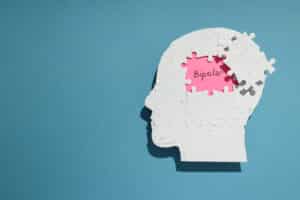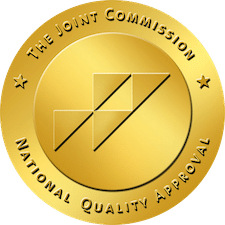Often people use panic attack and anxiety attack interchangeably. But did you know they are different?
Around 18% of the population experience anxiety disorders each year. Often anxiety attacks or panic attacks are part of this. However, many people do not know they are separate issues. Even if it is a one-off, you should know the differences.
So panic attack vs. anxiety attack: why is it important to distinguish them?
Whether you or a loved one experiences an anxiety attack or panic attack, it can be overwhelming. However, if you can identify between anxiety vs. a panic attack, you can use the correct techniques to stop it.
Read on for all you need to know about panic attacks vs. anxiety attacks.
Panic Attacks
The DSM-5 says panic attacks are linked to panic disorder. But panic attacks can also occur with other conditions.
Panic disorder is diagnosed when you have reoccurring panic attacks. Not everyone who has a panic attack will have one again or develop panic disorder.
Symptoms of Panic Attacks
Panic attacks are sudden episodes of intense fear. Four or more symptoms usually characterize them. Symptoms of an anxiety attack include physical and emotional sensations.
Physical signs include:
- A racing heartbeat
- Chest pain
- Shortness of breath
- Feeling hot or cold
- Nausea
- Shaking
- Feeling dizzy or lightheaded
- Sweating
- Tingling or numbness
There are also mental symptoms:
- Feeling like you are going to die
- Fear of losing control
- Derealization or depersonalization
- Feeling claustrophobic or smothered
Causes of Panic Attacks
Panic attacks can be completely unexpected. You can be working, with friends, or relaxing, and it may start.
There are also panic attacks that do have triggers. Triggers will depend on the individual, but some examples include:
- Risk factors such as a family history of panic disorder
- Withdrawal from alcohol or drugs
- Social or work stresses
Anxiety Attacks
The DSM-5 does not define anxiety attacks; instead, it lists anxiety. Anxiety is an umbrella term for various disorders too. Disorders include Post Traumatic Stress Disorder (PTSD) and Social Anxiety.
Symptoms of Anxiety Attacks
An anxiety attack is when anxiety sets in after a prolonged period of worry. Symptoms may be more pronounced for a few hours, days, or weeks. They can feel uncomfortable, and at times scary for the individual.
Physical symptoms include:
- Increased heart rate
- Restlessness
- Fatigue
- Insomnia
- Muscle tension
- Easily startled
- Numbness and tingling
- Hair-pulling
- Dry mouth
Mental symptoms include:
- Excessive worrying
- Restlessness
- Irritability
- Difficulty concentrating
Causes of Anxiety Attacks
Anxiety attacks can have the same causes as panic attacks. But there is always a perceived external or internal stressor. Women are twice as likely as men to develop anxiety disorders.
Triggers can be related to the specific disorder, such as:
- Phobias
- Social settings (social anxiety)
- Trauma memories (PTSD)
Panic Attack vs. Anxiety Attack Similarities
The main similarities are the shared symptoms. Breathlessness, and increased heart rate, are two symptoms they share. You can also experience one or the other together or independently of each other.
Panic vs. Anxiety Attack Differences
Anxiety attacks occur after a prolonged period of worry about specific triggers. They can also last a long time, and symptoms are mild, moderate, or severe. It is usually a gradual build-up, but symptoms can feel intense and overwhelming.
In comparison, panic attacks are sudden and do not need an external or internal stressor. They are more extreme and do not last more than 20 minutes on average. There are more physical symptoms and are disruptive to whatever you are doing.
You can experience panic attacks as part of an anxiety disorder or separate. Anxiety attacks often warrant a diagnosis, but a one-off panic attack usually does not.
How To Stop a Panic Attack
Witnessing or experiencing a panic attack can be extremely scary. However, there are steps you can take to prevent it from getting worse. Even though it can be sudden, note the moments before the attack to see if a pattern occurs.
1. Recognize it
Recognize you are having a panic attack and remind yourself it will pass.
Distraction can also work initially, as the more you focus on symptoms, the worse they can get. Try something that will shift your focus, such as listening to music.
2. Breathe
Take deep breathes from your stomach. Shallow breaths will increase your breathlessness.
An example is the 4-7-8 technique. You breathe in for four, hold for seven, and breathe out for eight seconds.
3. Try Physically Grounding
Some people do not find mindfulness helpful, and that is okay. Splash your face with water, or tap your feet on the ground.
Progressive muscle relaxation also works for some people. You tense then release each part of your body for roughly 30 seconds, starting with your feet. It helps remove any tension you are holding without realizing it.
Also, stroke a pet or hold an item that is soothing for you. It could be a piece of wood or a crystal. You can also smell something soothing, like a perfume that reminds you of a pleasant memory.
4. Practice Mindfulness
Notice objects around you. You can try 5-4-3-2-1. You find five things you can see, four you can hear, three you can touch, two you can smell, and one you can taste.
If you are holding a self-soothing object, focus on how it feels, its temperature, and how big it is.
5. Ask for Help
If there is someone around you, ask for their support. You can also call a professional. Or speak to a loved one or a friend.
How to Stop an Anxiety Attack
When symptoms feel overwhelming, you can follow the steps for how to stop a panic attack.
Also, know your triggers. Often, someone will have specific external or internal triggers. This could be anything from foods, a particular subject, or not sleeping enough.
Get Help with Anxiety and Panic Attacks
It is essential to know how to stop panic attacks and anxiety attacks. It is also necessary to know the differences between a panic attack vs. anxiety attack.
However, if you experience panic or anxiety attacks, talk to a healthcare professional. You are not alone. There is help out there.
The sooner you reach out, the sooner you can find ways to alleviate and manage your symptoms long-term. They will advise you on personalized treatment. Treatment usually includes therapy and sometimes medication.
California Sunrise Recovery’s Mental Health Center can treat anxiety and panic attacks. Contact us today to start your recovery journey.







